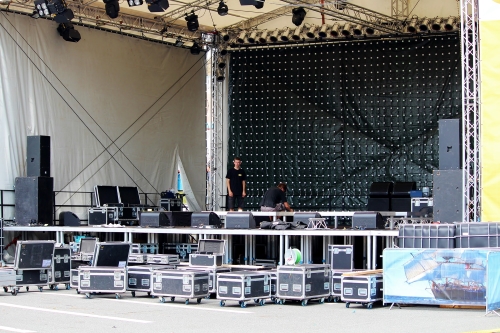This is a great business.
We all love the romance of providing sound systems for the top musicians in the world, world political leaders and other luminaries. The travel is fun, the adrenalin rush is great what’s not to like?
Well… It just seems really hard for the companies that own all this equipment to make much money.
Let’s take a hard look at pricing your services and maybe move toward some changes. It’s vital to start thinking in terms of “planning for profits.” But before beginning, I have good news and bad news.
First, The Good News
Because the market sets the price for the equipment and labor that we put on the road, and competitors that have been around for a long time have set the accepted market rates, it will take a long time for a new company to go out of business.
Now, The Bad News
If you don’t plan carefully and understand overhead costs in your business, then you’ll go out of business. And fast. What do I mean?
As a consultant, I spent a fair amount of time helping companies price their products and services. Sometimes I worked with manufacturers, and sometimes I worked with service providers like sound companies - the same types of companies whose staff typically reads this publication.
What I saw consistently, regardless of whom I’m working with, were real problems with pricing. Simply, most companies don’t understand it. Instead, they rely on the market to set the price and they take a given job (or choose to pass on it) based on an emotional - rather than fiscal – response.
How a sound rental company arrives at prices for its goods and services is a very interesting proposition. As most of you are aware, the government restricts companies from setting pricing as a group. This would be a violation of anti-trust statutes and people do sometimes go to jail for breaking laws along these lines.
Most sound company owners and managers lack the financial skills and experience to understand pricing strategies, and usually resort to a “forensic accounting” method of managing their business. That is to say, they add up all of the expenses and revenue at the end of each reporting period and feel good about the profit, or bad about the lack of it.
While we can’t all get into a room together and set pricing, there are some components of setting pricing structure that are critical to profitably running a successful business over the long haul.
Rule Number 1
Allocate your overhead to the planned business you’re expecting over the next year.
Overhead is made up of all of the costs associated with the activities in your business that are not billable directly to the client.
Rent, utilities, insurance, shop tools, indirect labor like administrative support staff, etc. all need to be factored into your pricing model to make sure that, at the end of the year, your company is profitable.
Rule Number 2
Develop a pricing model that breaks out the following components each time you quote a job:
• The cost of the equipment that goes out on the project;
• The cost of the labor that is directly linked to the job;
• The overhead cost of running your business allocated to the job.
Rule Number 3
Charge for the equipment that not only goes out of the shop for tours and projects, but also for the equipment that does not leave the shop as often. Everyone has “dog” inventory; everyone also has “funky” equipment in inventory that only goes out once in a while.
In a perfect world, you sell off the dog inventory and never buy anything else like it again. Likewise, funky inventory is best sold to a friendly local company that you can rent it back from on those rare occasions when its needed. If you have to carry inventory in these categories that doesn’t get rented out much, the carrying cost needs to be built into your pricing model.
Rule Number 4
Old equipment that you essentially got for nothing should be billed as if it were new. If you don’t bill the amount of the replacement cost for this equipment, you’re charging less than you would if you had to buy a whole new system to get the job.
In other words, as your business expands, you’re going to hit a point where you’re locked into old system pricing but have equipment costs that are much higher.
If you don’t create a budget plan to compensate for this, expect a lower margin for every new customer added to your client roster. Rank your customers, and resign accounts that are less profitable in favor of new customers willing to pay more for your company’s unique value proposition.
The three most critical issues in running a business today? Planning, planning and planning!
You must plan for each month, and review your plan on a regular basis. If things are “going off the rail,” the sooner the problem is seen, the sooner necessary changes can be made to fix it.
The secondary benefit is that if you meet with a bank about a short-term loan to cover a problem, it will be a far easier task if the loan officer sees that you have a plan. And that you manage by it.
In this case, the bottom line is indeed the bottom line. It’s imperative to the present and future of your business to understand overhead and cost structure.
Running a sound company is hard enough you shouldn’t have to wait to the end of the year for the outcome, like trying to finish a really long novel. It can be particularly tough when it comes out like a Greek tragedy.















